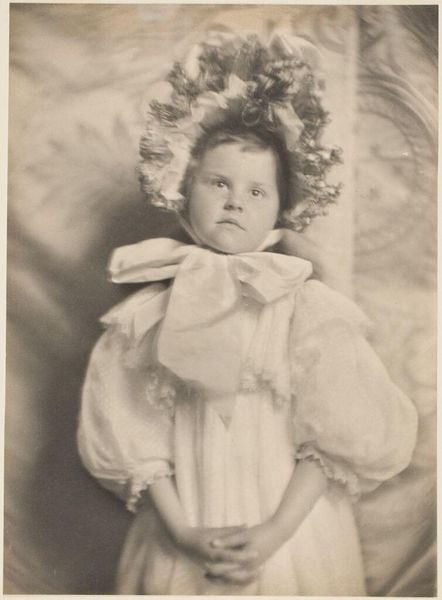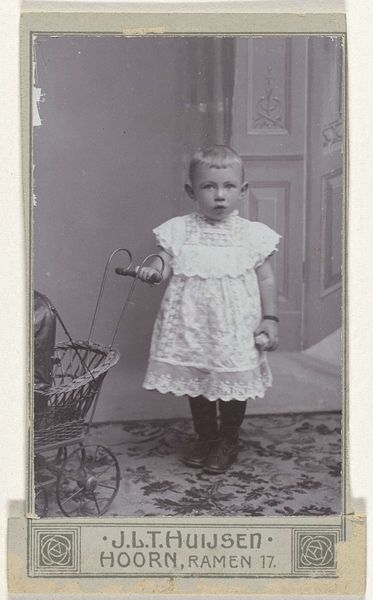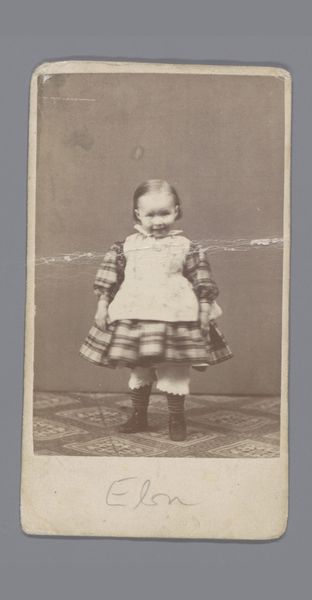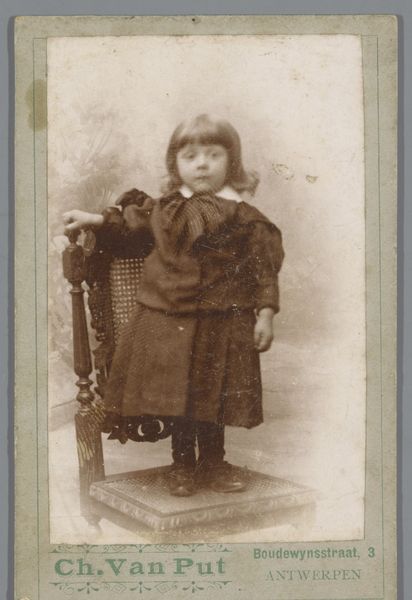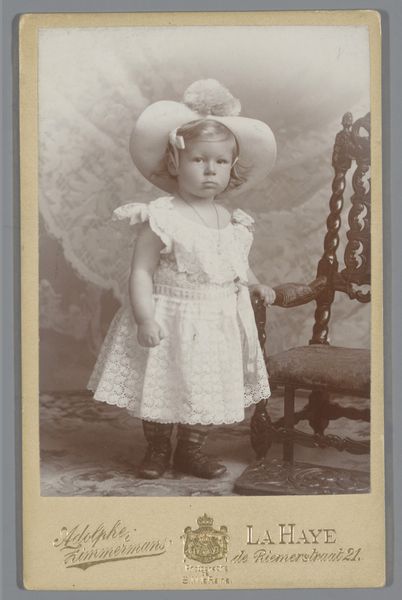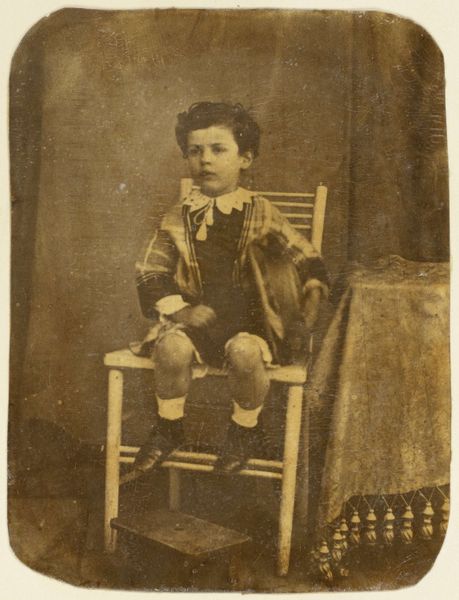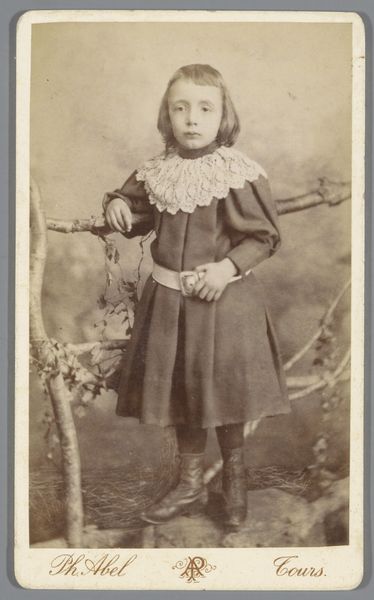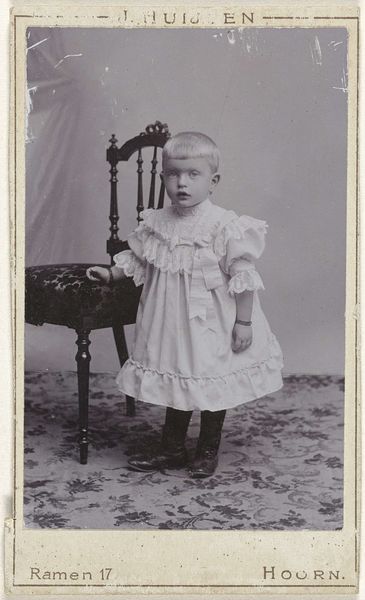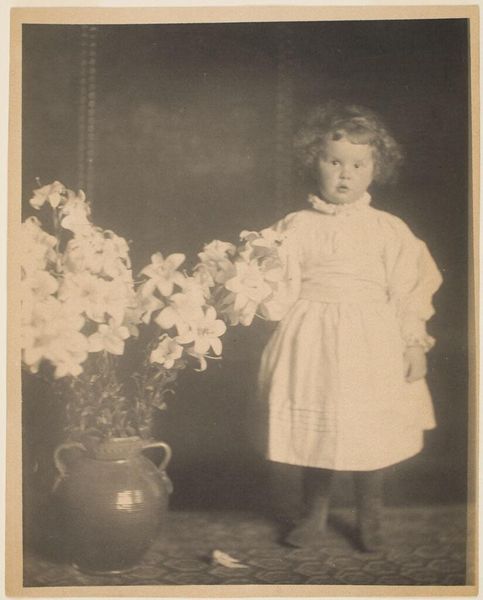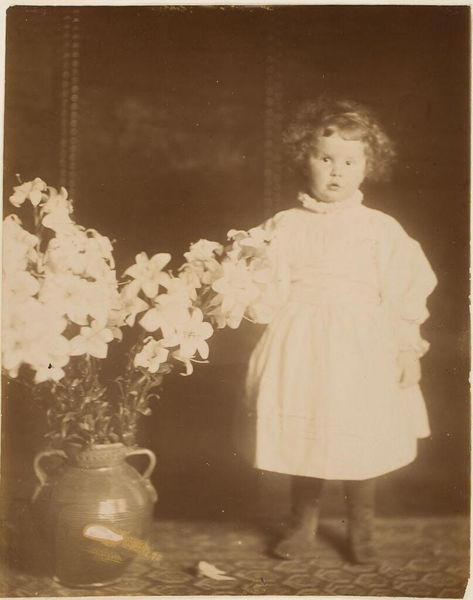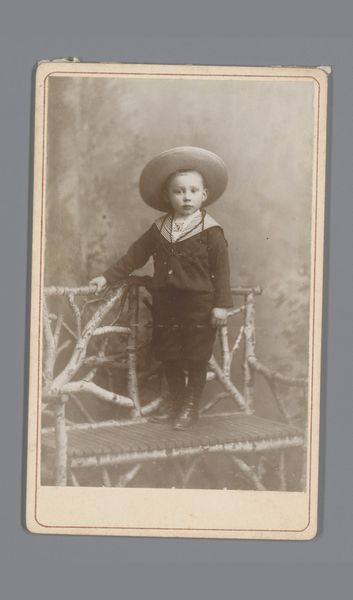
Portret van een kleine jongen met een hoed, staand op een stoel c. 1913 - 1914
0:00
0:00
americanautomaticfotografie
Rijksmuseum
photography
#
portrait
#
photography
#
historical fashion
#
child
Dimensions: height 85 mm, width 50 mm
Copyright: Rijks Museum: Open Domain
Curator: Here we have "Portret van een kleine jongen met een hoed, staand op een stoel," or "Portrait of a young boy with a hat, standing on a chair," created around 1913 or 1914 by American Automatic Fotografie, currently held in the Rijksmuseum's collection. Editor: My first impression is one of delightful artificiality. The stark backdrop, the child posed stiffly on the chair... it all speaks to a performative kind of innocence. Curator: Precisely! The photographic process itself in that era dictated a certain stillness. Observe the tonal range—the almost uniform gray, punctuated only by the crisp white collar. Semiotically, the limited palette focuses the viewer’s gaze entirely on the subject’s form and costume. Editor: Costume indeed. That oversized hat and lace collar seem less about reflecting authentic childhood and more about projecting a specific social identity. Perhaps the parents wanted to display prosperity or aspiration. It's fascinating to consider the societal pressures reflected in this constructed image of youth. Curator: And how that costume interacts with the spatial relationships within the photograph. The boy’s stance, leaning on the ornate chair, disrupts any simple reading of youthful playfulness. The chair, painted white, acts as a vertical, directing the eye and creating contrasting segments in the arrangement, dividing the frame and interrupting an otherwise predictable symmetry. Editor: Do you think the setting, the photographic studio in Amsterdam around 1913-1914 would impact the perception? Studios democratized portraiture to some degree, making these staged moments accessible to a broader section of society and reinforcing aspirations or social belonging, yet the final product retains a certain formality that marks the sitter as distinct, as noteworthy. Curator: The very nature of the photographic medium, regardless of its democratization, presents the self as something carefully crafted for an audience. This, along with attention to light and tonality elevates what could have been a document to the status of 'art'. It speaks, at its essence, to an almost theatrical presentation of self. Editor: Absolutely, and analyzing photographs like these offers a fascinating window into understanding a time, people, and technology of making a representation of the world, where a young boy on a chair says far more than it initially seems. Curator: Indeed. From the angle of strict visual analysis and the interplay of its formal elements we arrive to appreciate an object that transcends mere visual description.
Comments
No comments
Be the first to comment and join the conversation on the ultimate creative platform.
